What can be done with ITEAD IBOX. Part 1
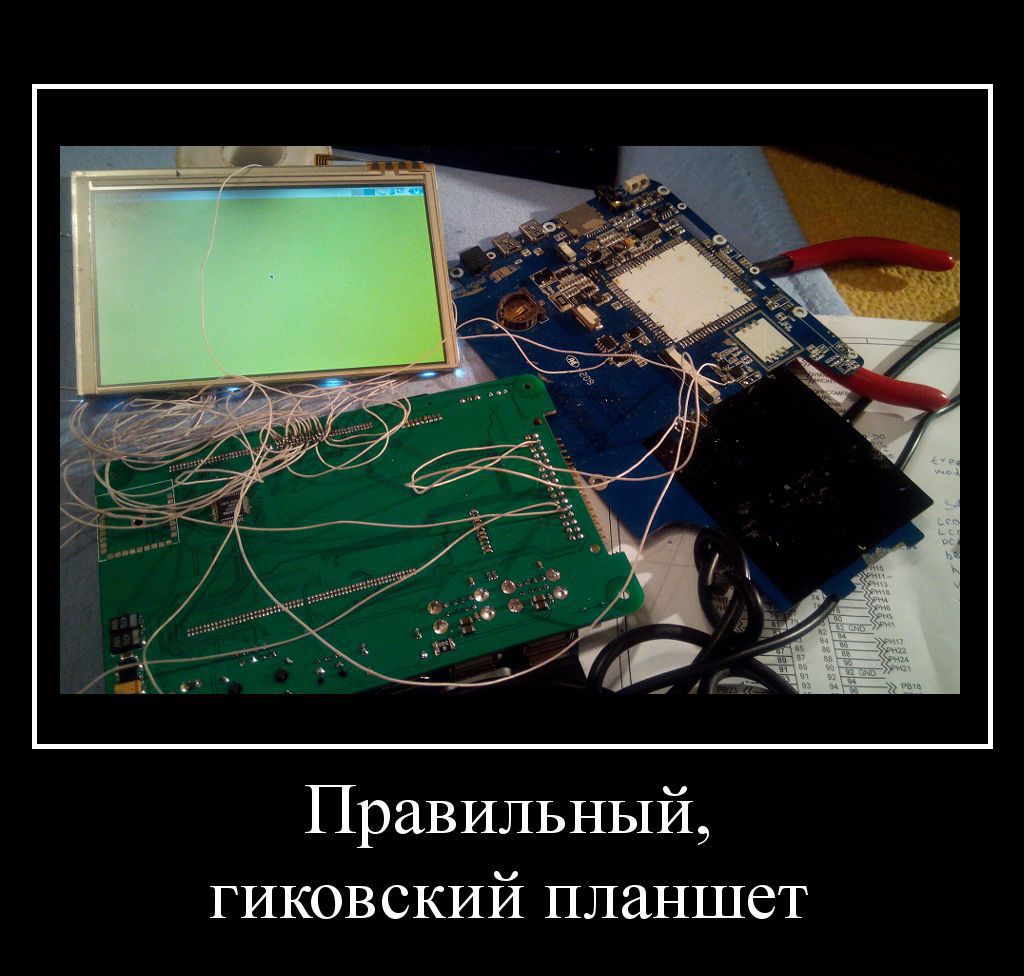
The other day there was a review of ibox . I decided to make my version of this review, as I also received a sample.
TRAFFIC
Introduction
It all started one day with reading the article on the new version of the hardware.
And then I thought, why didn’t we try our luck and beg for a sample, especially since I never succeeded. And writing a letter with the request, I did not count on absolutely nothing.
What was my surprise when they confirmed my request and sent it in the shortest time possible.
')
Getting
I will not describe here how I opened the box and what kind of pimples there are in the film - this is a kindergarten and it is full on the Internet.
I'll get right to the point.
Included was the IBOX itself and a 9V 2A power supply. That's it, no shields and buns. But we do not need them. Hands are - we will make buns ourselves.
Debriefing
The device did not turn on and the memory card did not hold.
There was no spring in the memory card slot.
The failure was due to the fact that the processor module was not fully inserted into the slot. Delivering - the board started up.
The first thing I decided to change the slot to a new one.
Here is a photo of the old slot in which the memory card does not snap:
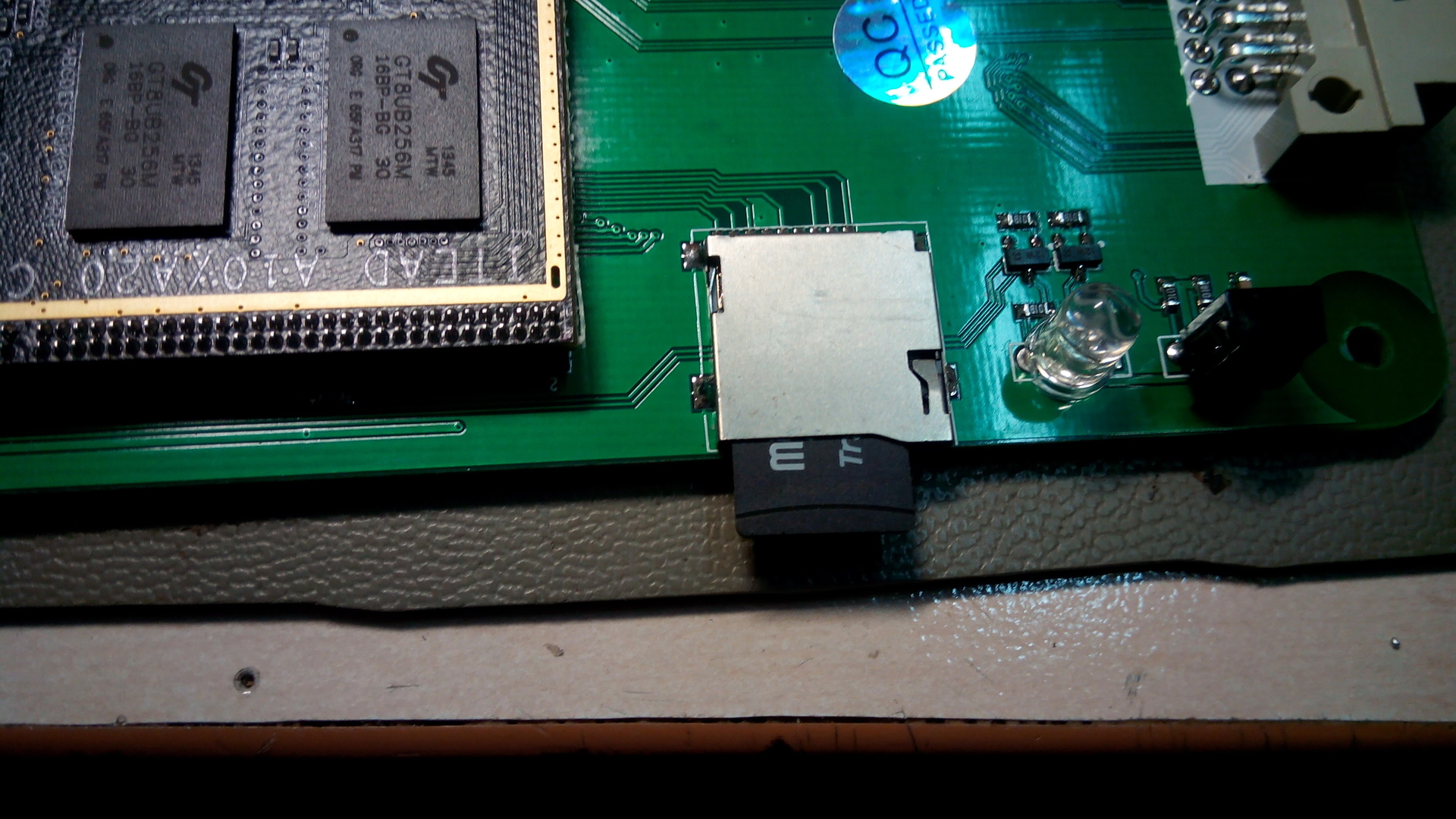
We unsolder:

Elah burned, the Chinese saved on copper, there is no normal mounting of the slot as such, and as a result of the removal, one area of the mass fell off — insanity, but we will fix it.
Old slot with missing mechanism:

And now we have installed a new slot and strengthened the fasteners:

Everything is holding on.
My opinion is that ITEAD was in a hurry with the release of IBOX because they were boiled down to the fullest and without prior haulage.
The next step, I paid attention to the basically useless expansion port, ITEAD, and then I distinguished myself by the fact that the port was not bolted to the board, and it was not standard, and I did not want to steam with it. We are changing!
Removed:
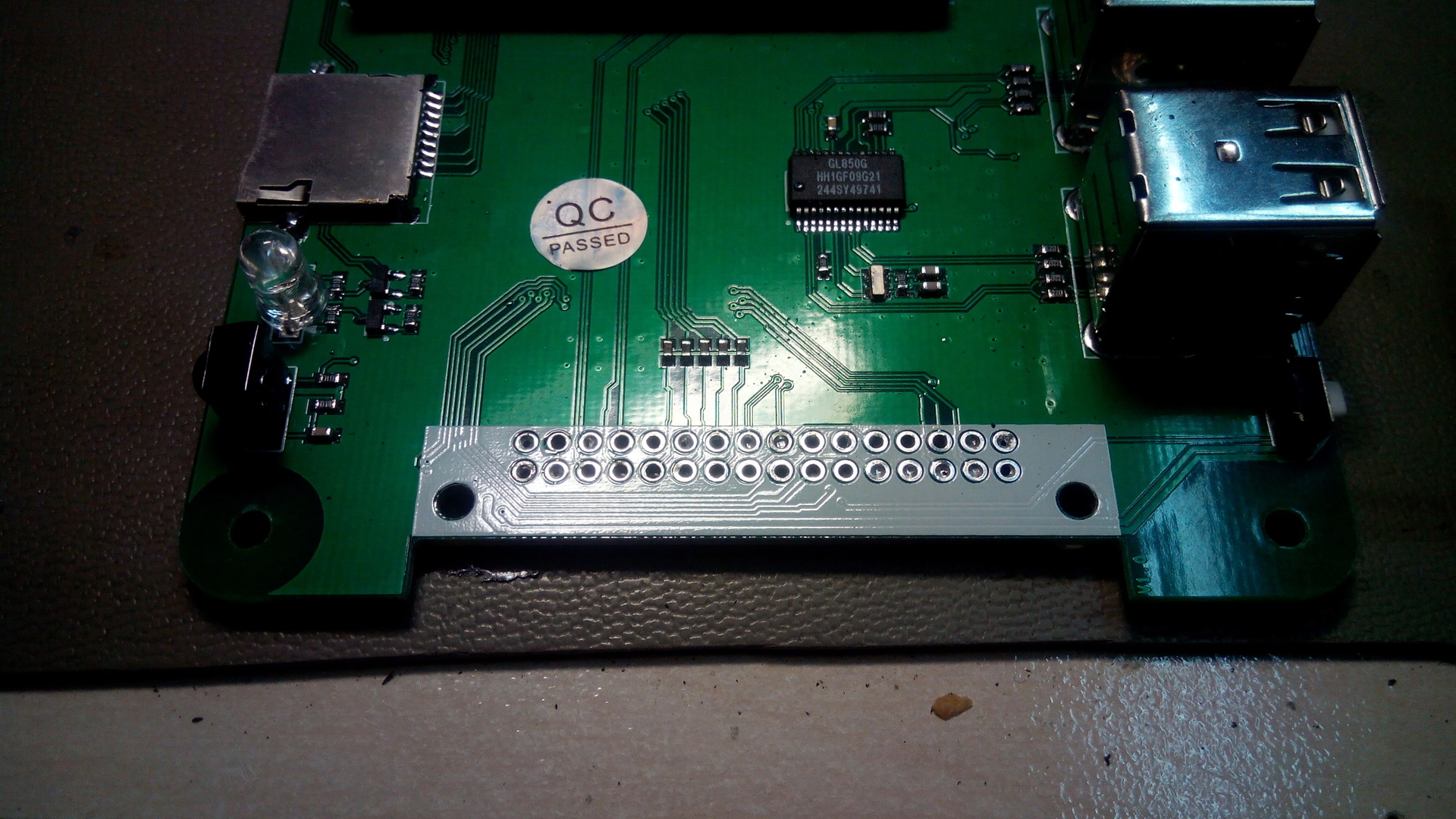
Old port and charge:
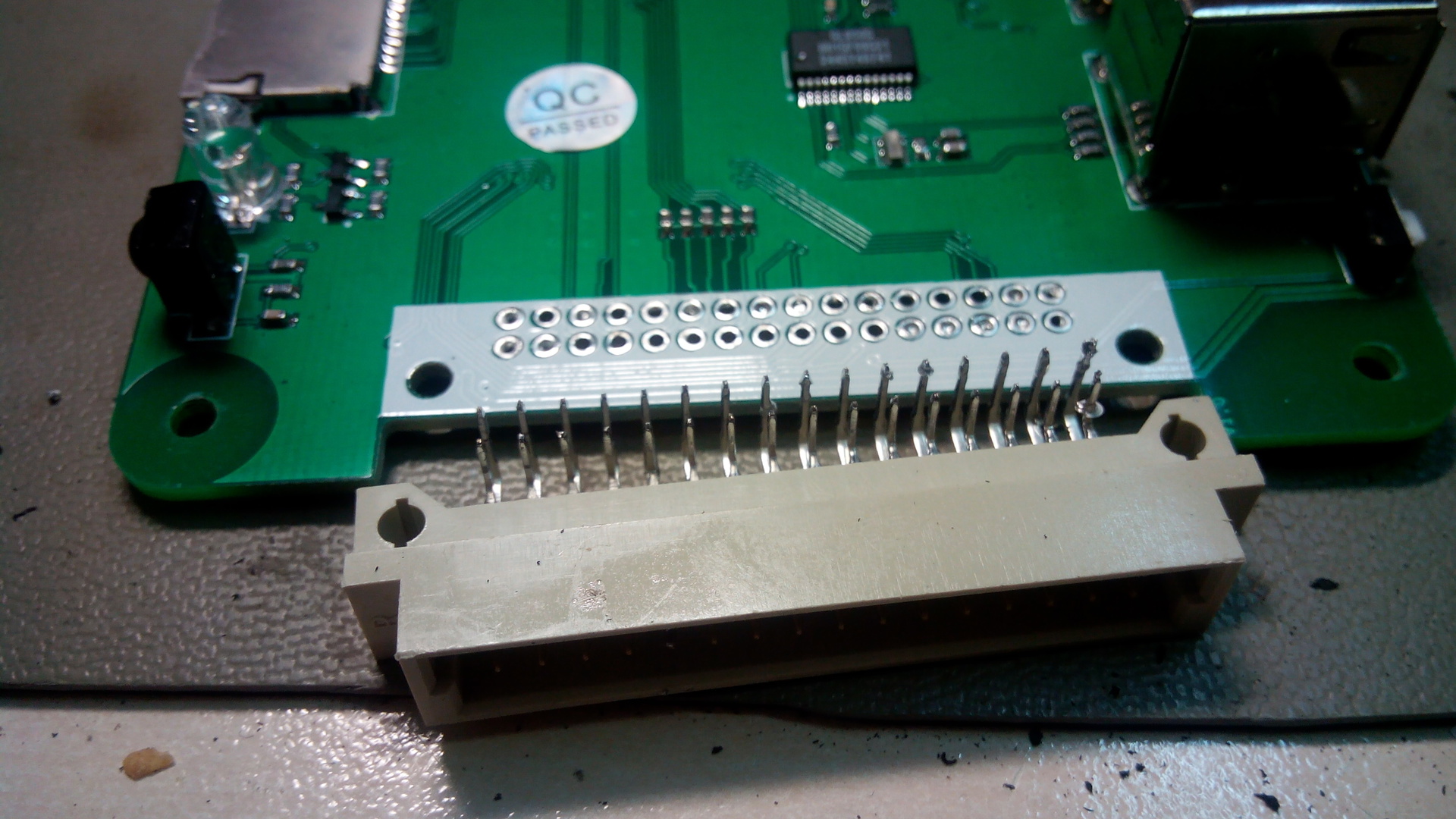
Installed a new one:

He same:

I removed the old one from the old motherboard and sawed a little. Now it is convenient to connect to some pins.
I did it for every fireman, you never know.
Madness
And then I sat and thought that I would make it from this device ...
Making a media center is stupid.
Workstation is boring.
And then I remembered an article on Habré .
Where in the comments I was outraged by the fact that they simply collected everything from the ready, and even that is crooked. And he promised to roll out his version.
But by this time, unfortunately,
Insanity was strong
As a matrix, I decided to take a matrix with a size of 5 inches from the steep COWON Q5W player:
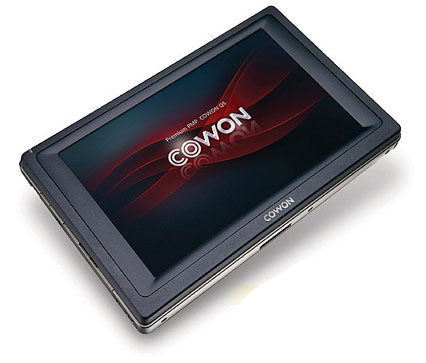
The matrix has a resolution of 800x480 matrix type PARALEL RGB and it is IPS. Manufacturer Mitsubishi.
I was not embarrassed by the fact that the pitch of the pins is too small and the complexity of the connection.
Lie down on the bed! Turn on the soldering iron!
After digging the manuals, drawing the pinouts, and adjusting the configs in the Debian boot image, I started the build.
It took me an hour and a half of leisurely soldering.
Soldered to the matrix:

And then to the board:
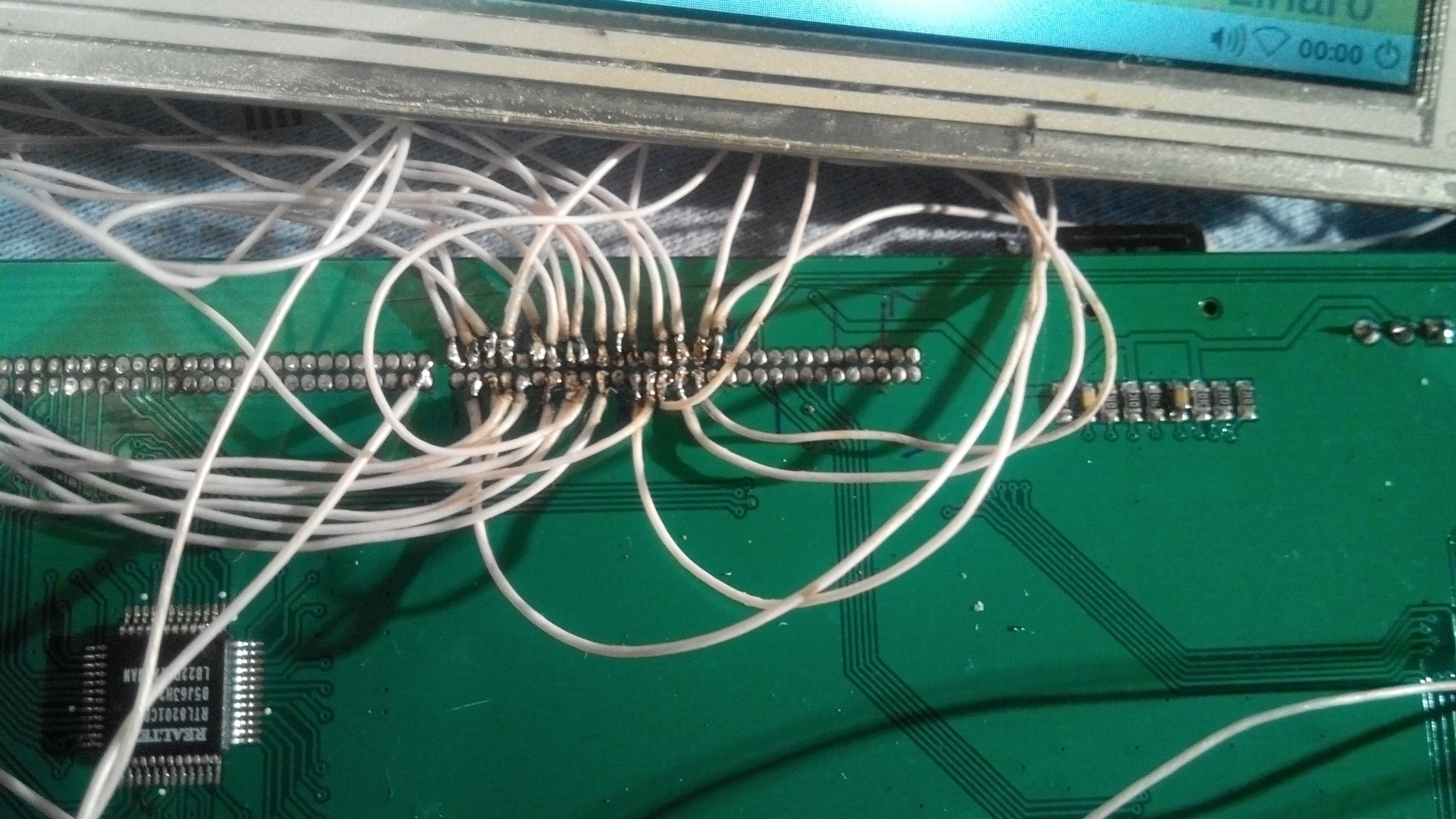
Still.
The second board is the motherboard from the tablet, with which I use the converter to illuminate and power the matrix:

The general process is a mess. And yes, this is not a table but a bed. And on the right is his wife and observes:

It's Alive !!!

Launched Linaro:
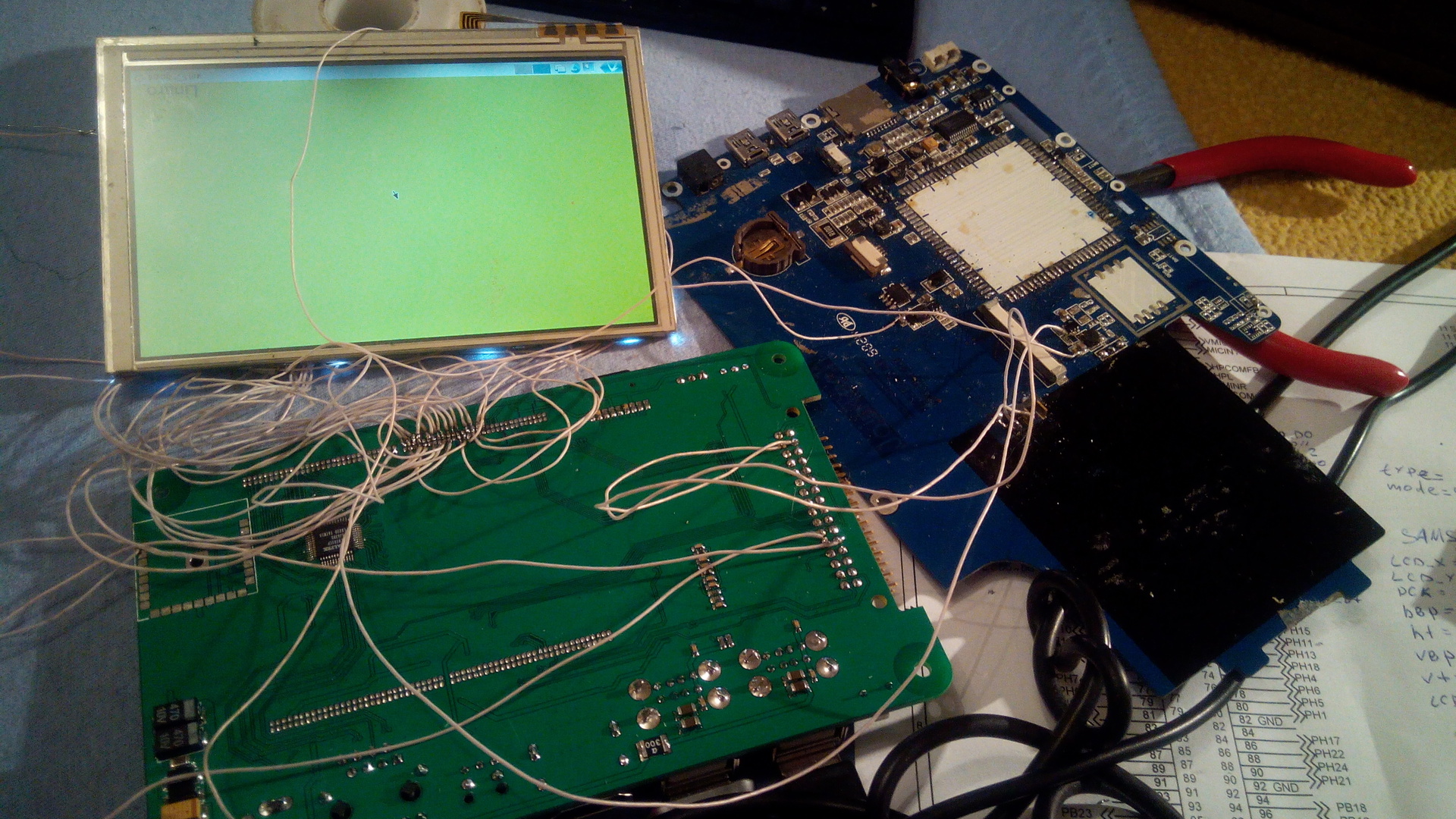
Well, the video of the work process:
Conclusion
Since this is only the beginning, the screen will be built into the native case, the battery will be installed.
Continued in the next part
Opinion on IBOX:
Weakly. The quality of the expansion card upset me. Also, I can not call it anything else as just a TV set-top box, since there is no normal access to ports for an ordinary developer.
Source: https://habr.com/ru/post/218013/
All Articles